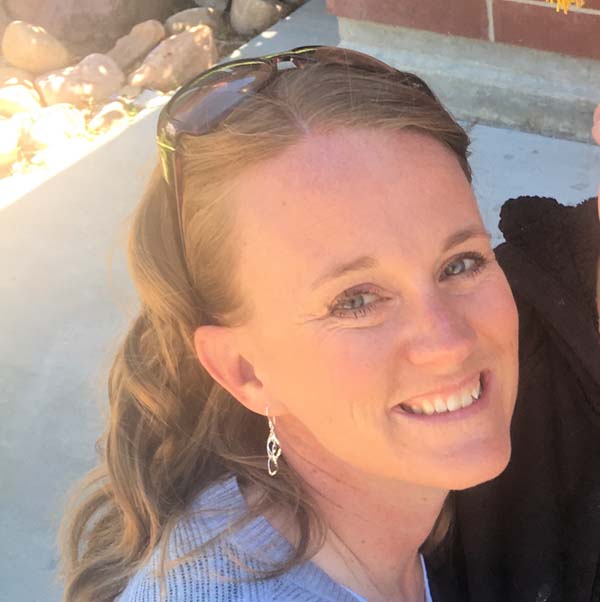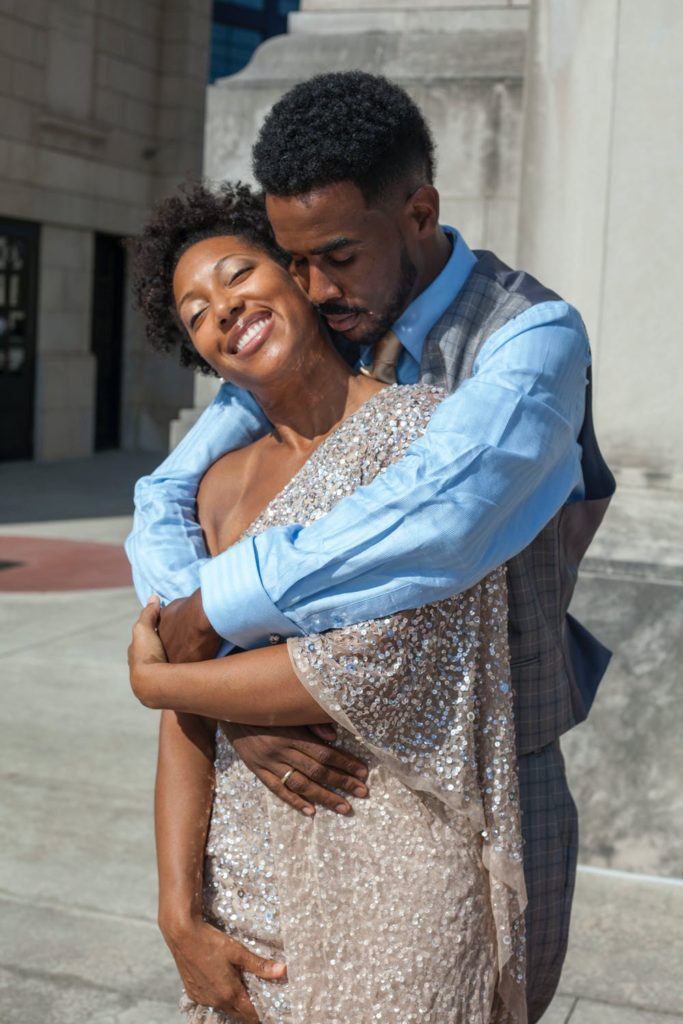If you’re like a lot of us, when you get together with girlfriends you talk about the kids, your job, your marriage, current events, childbirth (how does that always seem to come up?), and whatever you’re worried about currently. Maybe sex comes up from time to time, but keeping appropriate boundaries about what happens in the bedroom means that you don’t talk about details. (And that’s not a bad thing-keeping the intimate details of your sexual relationship with your spouse between the two of you is an important part of loyalty in a couple.)
But maybe the lack of conversation around sex has you wondering…am I normal? You might wonder if your level of sexual interest (or disinterest) is similar to other women’s. You might wonder about how often other couples have sex or who initiates in their relationships. You might wonder if your body’s responses are similar to those of other women.
Guess what? You’re probably very normal. Because as it turns out, there is a wide range of “normal” in a sexual relationship, and what really matters is what works best for you and your spouse.
But let’s talk about some interesting things you might have wondered about women’s sexuality.
WOMEN’S SEXUAL DESIRE:
As many as one third to half of women report experiencing low sexual desire.[i] So, if you find yourself falling into that category at some point in your life…you’re not unlike many women.
Sexual desire can ebb and flow throughout the course of your life or even throughout the course of a week or month, and this is particularly true for women.[ii] Things like pregnancy, hormone changes, stress, how much connection you’re currently feeling in your relationship, health, and a whole list of other factors can contribute to changes in sexual desire.
Sexual desire is a tricky thing to measure and a complex thing to understand. It’s probably no surprise to you that women’s sexual desire is particularly multifaceted. Recent research shows that there are many paths women take to sexual pleasure and many levels of sexual arousal and desire for women. Some women are easily aroused, others take some work, and almost all of them—although different–are perfectly healthy and “normal.”[iii]
If you find yourself feeling low desire at times, don’t think of yourself as “broken.” First, recognize that this is normal and even expected (and remember that men go through variations in sexual desire too). Sexual desire will fluctuate and that doesn’t have to be a bad thing. Give yourself permission to be wherever you are on the spectrum of desire. If your lack of desire becomes a long-term problem and causes you concern, it might be time to seek some therapeutic help with a licensed therapist. (Or continue learning about sexuality by further exploring this website.) But if you find that some days, you’re simply less interested in sex than others, don’t stress about it. What you can focus on is finding ways to strengthen your sexual relationship with your spouse. You can work together to find ways that you are both happy and satisfied, that you both feel connected to the other, and ways to be patient with each other as you go through the ups and downs of sexual desire together.
WOMEN’S SEXUAL RESPONSE:
Back in the 1960s, scholars[iv] introduced new research regarding the human sexual response, and for several decades it was used as the basis for understanding the body’s reaction to sexual experiences. They described a path of sexual activity beginning with sexual desire and followed by arousal, climax, and then resolution. In fact, this might sound like the way you expect your sexual experiences to go because it’s been accepted for so long as “normal.” But in reality, this is only a pretty typical response for men.
More recently researchers have started to question whether this sexual response is accurate for women. Do women need to be following a pattern like this to be “normal”? It seems like women might experience sex differently not only from each other, but also from men.[v]
For starters, women are meaning makers and relationship seekers, and that applies to sex too. If they don’t feel intimately connected to their spouse at that moment, sex might not be all that appealing for many women. Women desire an intimate connection and hope that sex will enhance that connection even more, but it’s often important that it’s there in the first place for a woman to feel “in the mood.” There’s got to be “emotional foreplay” happening long before the sexual experience starts.
Second, for a lot of women, sexual arousal comes before sexual desire (this is a flip-flop from the 1960s response cycle that’s become so popular). For many men, they are ready for sex almost anytime, but women often don’t feel the same way. It might be hard for women to switch paths in their mind and let go of the to-do list, stop worrying about the kids, or quit thinking about their day and instead focus on a sexual experience. Sometimes a woman has to feel a little bit of arousal before she feels the desire. Sometimes a woman can choose to say yes s with an open mind despite not feeling aroused and let the desire come after the touching starts.
Third, sometimes women aren’t all that aware of their own sexual desire or arousal. Women, in general, aren’t as good as men are at noticing their inner physical cues–even cues like hunger or pain. It may be because they are socialized to worry about what they look like (an external rather than internal focus) and fail to notice some of the inner sensations.[vi] Or it may be that they feel responsible for everyone in the household and it’s sometimes hard to slow down and focus on their own needs and desires.
Knowing this, if you want to kindle the flame in your sexual relationship, make sure that the two of you are spending time together connecting before the sexual experience ever starts. Then, slow things down in the moment and pay close attention to your feelings during a sexual experience. Focus on your body’s sensations and in a non-judgmental way consider what you are feeling. Let yourself fully experience the moment and see if the desire follows.
WOMEN AS THE HIGHER DESIRE PARTNER:
So far what we’ve talked about centers around challenges such as “low” sexual desire and differing sexual response. But for some women, they wonder why they want sex more than their spouse. If you fall into that category, guess what? You’re normal too!
It’s not uncommon for women to be the higher desire partner. And what’s really normal is that every single relationship has a higher desire partner and a lower desire partner. Instead of feeling like that makes things complicated (although sometimes it does), you can see it as an opportunity for growth together as a couple. If you both always agreed on how often to have sex there would be little compromise involved, little need to navigate the other’s needs or desires, and little personal or couple growth.
Many of the same ideas apply for men as for women if they want to increase their desire. Take time to connect with each other in non-sexual ways, slow down the process and allow yourselves to feel the sensations, work together to find what works for you as a couple.
Hopefully, knowing that there are a wide range of levels of sexual desire and sexual response gives you a bit of comfort. Because guess what? “Normal” is whatever works for you and your spouse. It doesn’t have to be the same as anyone else. It doesn’t have to be the same from one day to the next. It doesn’t need to match up with your girlfriends’ experiences. And it certainly doesn’t have to look like what you’ve seen on the big screen. Your sexual relationship is between the two of you and it’s up to you to find what makes it wonderful for you. And your “normal” can be beautiful.
[i] Michael, R., Gagnon, J., Laumann, E., & Kolata, G. (1994). Sex in America: A definitive survey. Boston: Little Browne & Co.
[ii] Vowels, M. J., Mark, K. P., Vowels, L. M., & Wood, N. D. (2018). Using spectral and cross-spectral analysis to identify patterns and synchrony in couples’ sexual desire. PloS one, 13(10).
[iii] Chelom E. Leavitt, Nathan D. Leonhardt & Dean M. Busby (2019) Different Ways to Get There: Evidence of a Variable Female Sexual Response Cycle, The Journal of Sex Research, 56:7, 899-912, DOI: 10.1080/00224499.2019.1616278
[iv] Masters, W. H., & Johnson, V. E. (1966). Human sexual response. Boston, MA: Little, Brown and Company.
[v] Basson, R. (2001). Using a different model for female sexual response to address women’s problematic low sexual desire. Journal of Sex & Marital Therapy, 27(5), 395-403.
[vi] Fredrickson, B. L., & Roberts, T. A. (1997). Objectification theory: Toward understanding women’s lived experiences and mental health risks. Psychology of women quarterly, 21(2), 173-206.

Amber Price
Amber A. Price has a master’s degree in Marriage, Family, and Human Development from Brigham Young University and is currently working on her doctorate. Her research interests focus on an individual’s sense of self and how it is associated with intimate relationships such as sexuality and emotional intimacy, with a particular interest in women’s experiences. Amber has been married to Josh for 19 years and they have 4 sons. You can find more from Amber at https://amberaprice.com.


